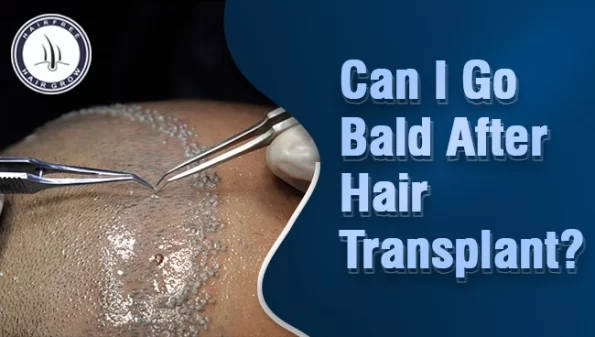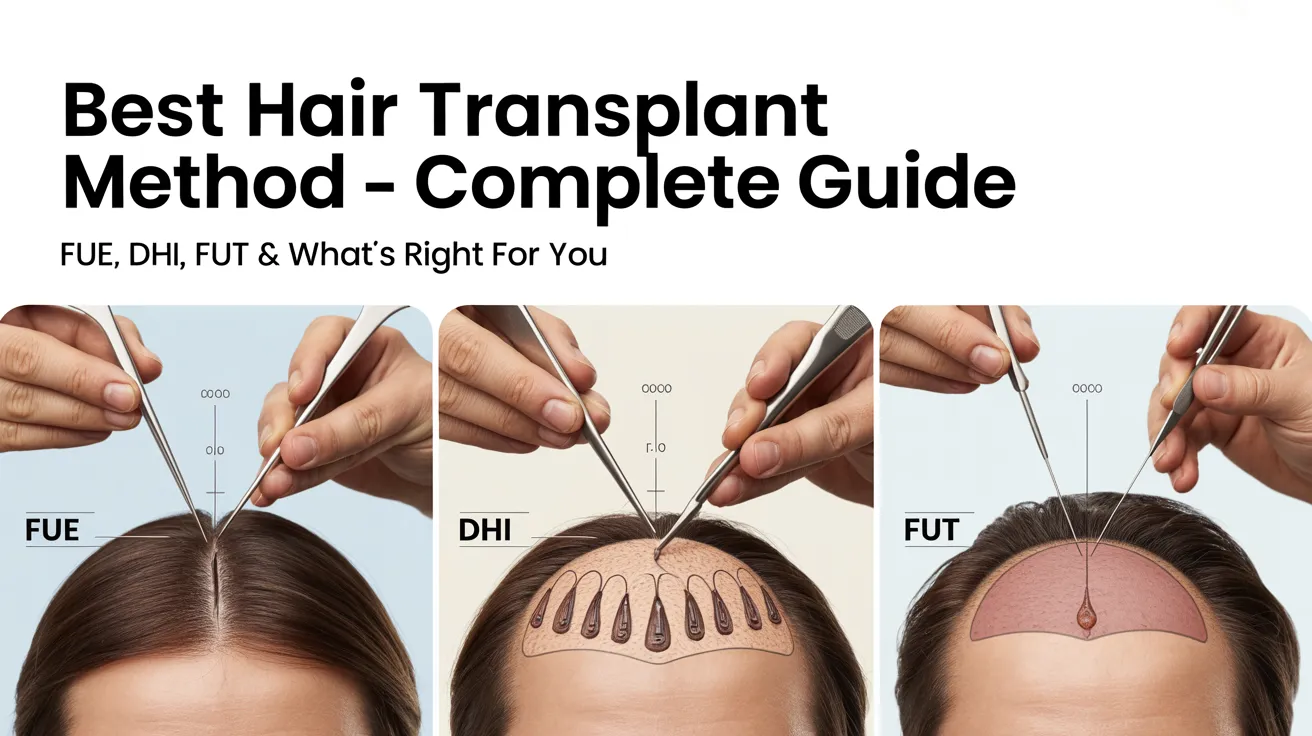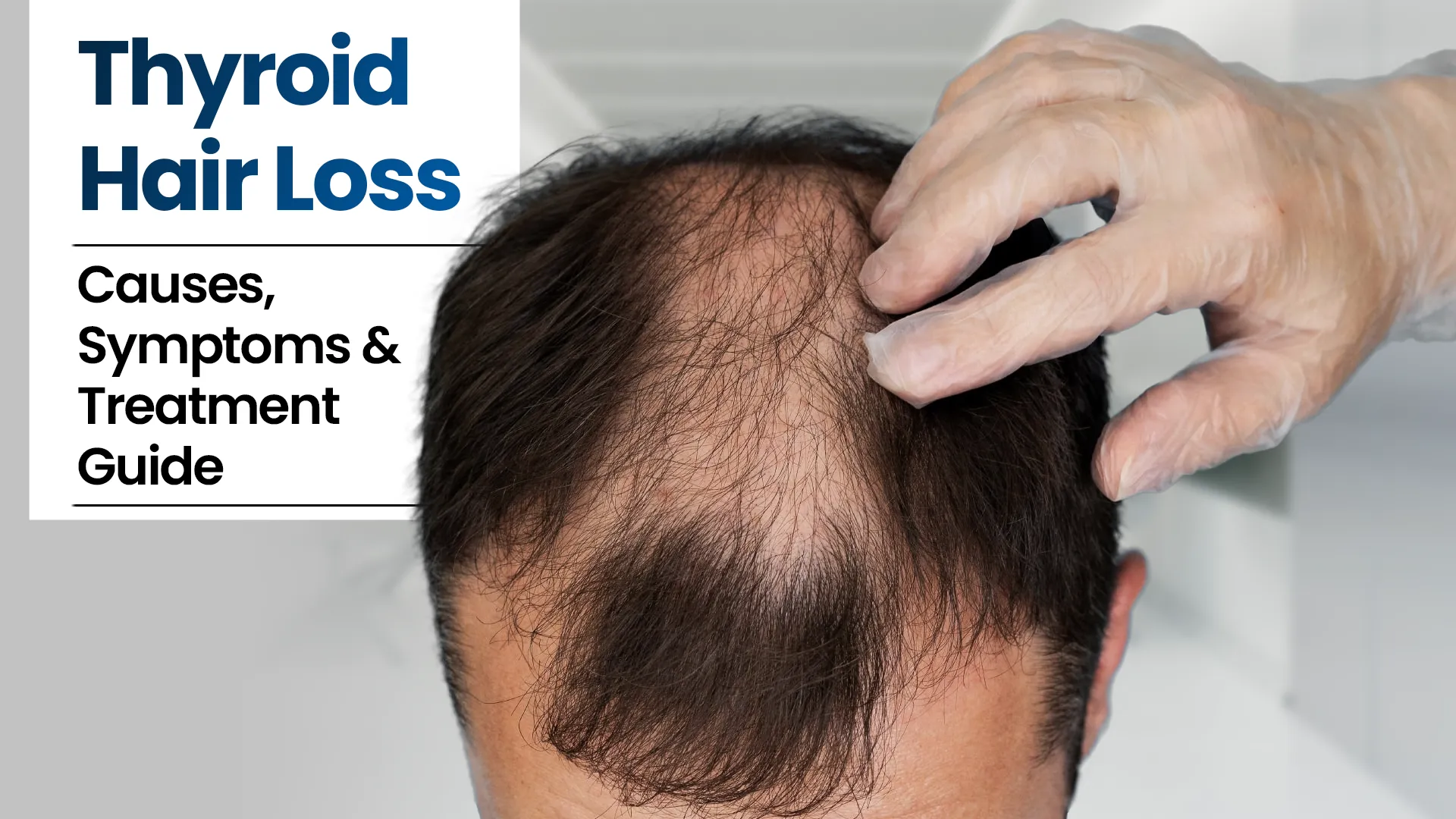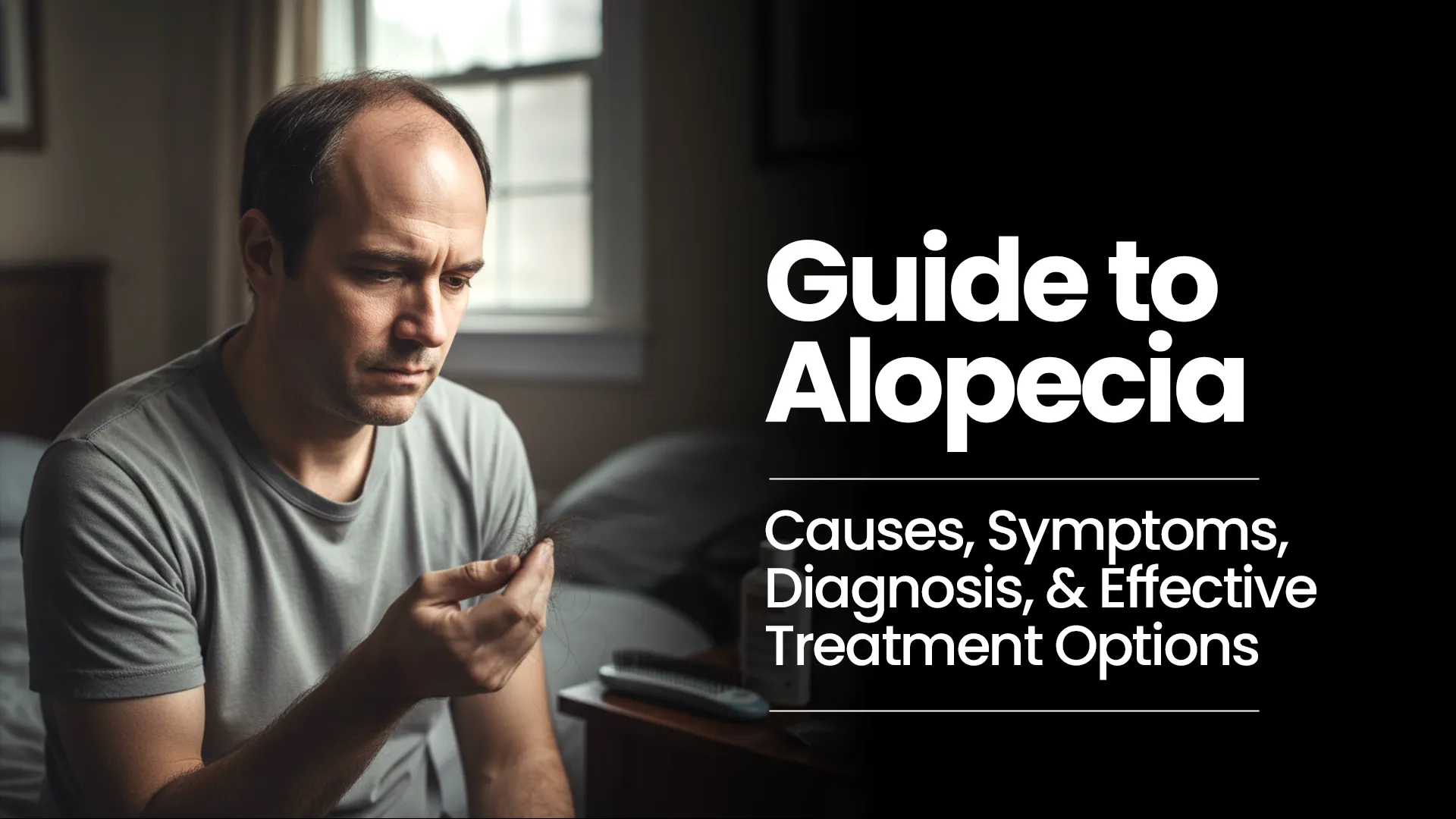Hair loss is a common problem that affects many people, and hair transplant surgery has become an increasingly popular solution. However, hair loss after a hair transplant can be a concern for some individuals. What causes this hair loss, and is it treatable? Here, we delve into the topic in detail and provide answers to all your questions. Worried about being bald after a hair transplant? Discover how to ensure lasting hair growth!
To put it briefly, we perform FUE (follicular unit extractions) hair transplants to help hair regrow without noticeable scarring and with minimal downtime. While hair loss after a transplant can occur due to various factors, such as biological, genetic, and environmental, it is usually a treatable issue. Our team of experts is here to answer all your queries about what to expect after hair transplant surgery, including possible hair loss.
Can I Go Bald After Hair Transplant?
Yes, it is common for patients to experience temporary hair loss after undergoing a hair transplant. This is known as shock loss and can occur two to eight weeks after the surgery. It is a temporary side effect, and the hair usually begins to grow back after the shock subsides.
After the initial shock loss, the transplanted follicles will start to produce new hair, which will typically appear thinner initially. However, as the hair grows, it will become thicker and healthier-looking, resulting in a natural-looking head of hair.
It is essential to follow the post-transplant care instructions provided by the surgeon to minimize the risk of shock loss and promote healthy hair growth. If you experience any concerns or issues after a hair transplant, it is best to speak with your surgeon for advice.
What About Pattern Baldness After Hair Transplant Surgery?
After undergoing hair transplant surgery, most patients do not typically experience pattern baldness again. The reason for this is that the harvested hair follicles used in the transplant are less likely to fall out since they are taken from the sides and back of the patient’s head, which are less susceptible to pattern baldness. However, over time, the transplanted hair follicles may naturally thin out, which can result in a less dense appearance.
In rare cases, the thinning of transplanted hair could be due to a surgical error, such as the selection of an inadequate donor site for hair follicles. In such instances, revision surgery may be necessary to address the thinning areas of the scalp. Overall, it is crucial for patients to have realistic expectations and understand that hair transplant surgery does not guarantee permanent hair regrowth.
How to Avoid Hair Loss After a Hair Transplant
Here are a few ways to avoid hair loss after a hair transplant:
1. Proper Timing of the Surgery
The timing of the surgery is critical to ensuring the success of the hair transplant. Patients should only undergo surgery when the balding process has stabilized. If patients undergo surgery too early, they may experience hair thinning after the transplant because the hair is harvested from a part of the scalp that is still going to fall out. Patients need to understand how far their hairline will recede and the overall extent of their balding before committing to surgery.
2. Picking the Right Hair Transplant Surgeon
Choosing the right hair transplant surgeon is crucial to ensuring a successful procedure and avoiding hair loss. The surgeon should be experienced, well-trained, and have a proven track record of successful surgeries. A reputable surgeon may take into account factors such as age, medical history, or other factors to determine the ideal timing for surgery and the right technique for the patient’s needs.
3. Follow Aftercare Instructions
Aftercare is a crucial aspect of ensuring a successful hair transplant surgery. Patients must follow all the post-op instructions provided by the surgeon. These instructions may include:
- Not washing the hair for a few days after the surgery.
- Avoiding intense physical activity for a few weeks after the surgery.
- Avoiding exposure to direct sunlight for a few weeks after the surgery.
- Using special shampoos or topical treatments to promote healing and growth.
Patients should also report any concerns to the surgeon as soon as they arise. If there are any signs of infection or inflammation, patients should contact their surgeon immediately.
How Does Hair Transplant Work?
Hair transplant is a surgical procedure that involves transplanting hair follicles from a donor area, typically the back of the scalp, to a recipient area where hair is thinning or balding. There are two main techniques for hair transplant: follicular unit transplantation (FUT) and follicular unit extraction (FUE).
In FUT, a strip of scalp containing hair follicles is removed from the donor area and then dissected into individual follicular units. The recipient area is prepared by making small incisions, and then the follicular units are implanted into these incisions.
In FUE, individual hair follicles are extracted from the donor area using a specialized tool, and then implanted into the recipient area. FUE can be performed manually or with the assistance of a robotic hair transplant system.
Does Transplanted Hair Last Forever?
Yes, transplanted hair is considered to be permanent and should last for the rest of your life. This is because the hair follicles used in the transplant are typically taken from the back and sides of your scalp, where hair growth is not affected by the hormone dihydrotestosterone (DHT) that causes hair loss in other areas.
However, it’s important to note that while the transplanted hair should last forever, the existing non-transplanted hair on your scalp may still be susceptible to DHT-related hair loss. Therefore, it’s essential to follow a comprehensive aftercare plan and hair loss prevention strategy that includes products or medications that suppress DHT if necessary.
To enhance your overall results, your hair transplant specialist may also recommend additional procedures such as PRP or exosome therapy. These treatments can help improve the outcome of your hair transplant by promoting hair growth and reducing inflammation.
Before undergoing a hair transplant procedure, your specialist will provide detailed information about the procedure and aftercare plan to ensure you have a comprehensive understanding of the process and what to expect.
Schedule a Hair Transplant Consultation
If you’re experiencing hair loss and are interested in scheduling a hair transplant consultation at Hairfree Hairgrow Clinic, you can visit our website or contact us on this number +91-7272832222 & Share your Photos on Whatsapp: +91- 7272832222 directly to set up an appointment. The clinic offers personalized treatment plans and compassionate care to all patients, with the goal of helping you regain confidence in your appearance.
Don’t let hair loss hold you back from feeling your best. Take the first step towards restoring your hair by scheduling a consultation with the experienced doctors at Hairfree Hairgrow Clinic.
Written By
MBBS, DDV
Dr. Nipun Kesarkar is a leading hair transplant specialist with many years of experience. He excels in advanced restoration techniques and addresses concerns about post-transplant baldness. Dr. Kesarkar has performed thousands of successful procedures, ensuring significant hair growth with minimal loss.
Disclaimer
We’ve made all possible efforts to ensure that the information provided here is accurate, up-to-date and complete, however, it should not be treated as a substitute for professional medical advice, diagnosis or treatment. See Detailed Disclaimers Here.





